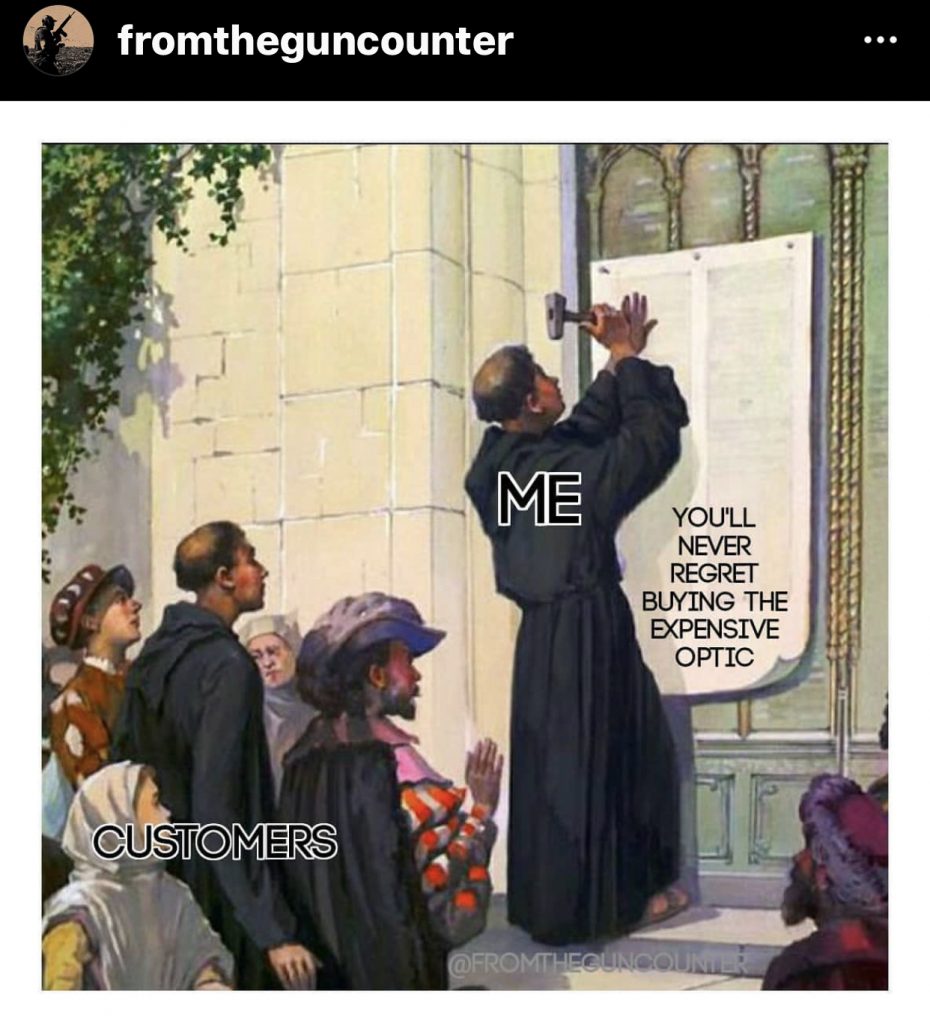The Razor HD Gen III from Vortex is one of those industry standard setting optics. It embodies several traits that others, even those who make an exemplary scope, fall short on in one juncture or another. It hits the right balance of ‘excellent’ in all categories without going overboard to be the best in one at the expense of that balance. Well, except magnification and illumination which they flexed hard in.
In their words, “Screw 1-8’s.”
Mike, “THE GarandThumb” goes through the scope (two variants are available) and covers, again, why it should be on your short list of LPVO’s, if your optic budget is around $2k.
Believe it, that is a very reasonable optic budget for a fighting rifle you expect to stretch its legs (>100 yards). Spending the same or more on a (variable power) optic than you spent on the rifle is the norm for durable high quality glass. Red dots and fixed power options are another matter, but I digress.
Can you get perfectly acceptable 1-6’s for about $700-900 less? Absolutely. Should you consider those instead? Perhaps, especially in the SFP models. Does 1-6 cover your need? It could, it probably does in fact. Only you can decide if you want or need the capabilities of the 10x, an 8x, 6x, or even a 4x over a dot just as you would decide second or first focal plane.
The 1-10x is the bridge that now places fighting carbine optics in and beyond where sniper and DMR glass was during early and middle GWOT. This easily eclipses what the Mk12’s Leupold 2.5-8x could bring to an AR. It dramatically increases the PID capability of any rifle, a necessary capability both domestically and abroad. It delivers best in class reticle illumination which allows it to serve in the LPVO role where a reflex dot is what the shooter is looking for to break a quick close shot. 10x gives you that much greater capability to observe and, if necessary, take a positive and confident shot.
That optic might live at 1x 95% of its service, but if you need 10x you have 10x and you gave nothing up over most 1-6’s to get it, except money. And, depending upon the 1-6 or 1-8 you were looking at, perhaps not even that.
Individual optics from names like Nightforce, Leupold, and Schmidt & Bender may overshadow the Razor Gen III in a single category, usually glass clarity, color quality, or light transmission. But not one of them has delivered a 1-10, not one has matched the illumination and battery life, and in the grand calculus (just like the SCAR 16 rifle in SOCOM’s hands) the extra cost they all command is no longer delivering enough extra performance in comparison.
Vortex knew they didn’t have to be the best in glass clarity, weight, or size. They had to excel at them, but they didn’t need to be number one to set the new standard. Developments here are all diminishing return categories. Having a 14oz LPVO would mean nothing if it came out to $8,000 for it and 17-22oz optics are durable, affordable, and abundant.
Having the absolute most exquisite lenses for transmission of image is the same kind of thing. If the 8k TV is 400% of the price but the 4k TV is only 80% more and both deliver an objectively excellent image with highly desirable features, the 4k is going to win the appeal game until the 8k can hit that balance which includes price. Diminishing returns will keep the materially “best” systems in dramatically lower sales volumes while “great” systems thrive, objectively making them the best.
The Gen III having the highest magnification, while achieving near physical parity with peer optics, that stands out. Doing it in a common tube format for modern mounts, that stands out further (sorry Atibal, 34mm was the answer). Closely paralleling your current industry standard LPVO so that the new one can take over in place (by getting the same mount or rings, just in 34mm) brings even more interest…
Cracking the front focal plane illumination conundrum with an exceptional reticle (that you can see past, even) and keeping it at the $2,000 street price point. That sets new standards.
Like I’ve said previously, the Razor Gen II and Razor Gen II-E were not materially the best. Both the CQBSS and VCOG held material superiority in various categories. But they didn’t hold the balance in all categories, Vortex did, and that balance raised the stakes and caused a rise across the industry in quality, quantity, performance, and accessibility. The Razor Gen III was designed to repeat the feat, and it has.
The whole feature set makes it the trend setter. The most magnification with the best illumination in two exceptional reticle patterns through excellent glass, housed in an identically weighted nearly parallel eye-relieved body with defense industry preferred capped/protected turrets at a street price well within the current markets standards for optics.




